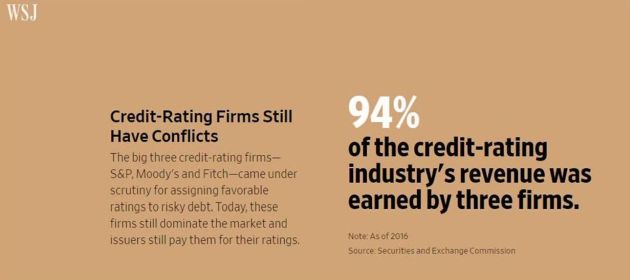Direct-to-Consumer financial technology startups are new age companies that sell bank accounts, loans and other financial products directly to end users. In this post, we’ll use the term “Fintechs” to refer to these D2C firms and “Fintech” to refer to the industry as a whole.
Fintechs are different from “Fincumbents”, which is a term I’ve coined for traditional IT vendors that supply financial services technologies (e.g. core banking system, loan origination software, etc.) to banks but offer no financial products of their own.
By its very nature, the Fintech business model is predicated upon disruption (i.e. killing) of traditional banks. On the other hand, the Fincumbent business model relies on partnership with traditional banks.
In their early days, fintechs used to chant the disruption mantra incessantly. No surprise given that disruption was their raison d’etre.
Maybe. Maybe not. IMO, disruption is a VC-fueled myth. Let alone enterprise s/w, it happens rarely even in B2C. If there was a Twitter in 1990, SAP, Oracle et al would've figured on a similar tweet then. They're still ERP market leaders 30 years later. https://t.co/hkFwg1fTW0
— Ketharaman Swaminathan (@s_ketharaman) April 21, 2019
But, of late, the disruption buzz has subsided considerably.
Maybe because fintech hasn’t succeeded in disrupting anybody in financial services – not even credit rating agencies, who have been sitting ducks for getting disrupted since their role in causing GFC became evident.
For reasons highlighted in Why Nobody Went To Jail For Great Financial Crisis, it was the sheer incompetence of traditional CRAs that caused the Great Financial Crisis (and the looming IL&FS crisis in India). So, there has been a compelling reason to kill the Moodys, S&Ps and Fitchs of the world and create alternatives to them.
Credit rating involves a lot of number crunching. According to the digerati, traditional FIs are terrible at leveraging data whereas digital native Fintechs are analytics ninjas.
Still fintech hasn’t been able to disrupt the credit rating industry.
The same old three CRAs earned 94% of credit rating revenues in 2017 (Source: Wall Street Journal).
The famous Bill Gates quote hasn’t worked here – fintechs have had their proverbial 10 years since the incompetence of CRAs was exposed in circa 2007.
Realizing that they haven’t managed to disrupt traditional FIs in the one space that leverages their core competencies and has been ripe for disruption for a long time, fintechs have perhaps concluded that they won’t be able to disrupt traditional FIs in any other area of financial services. Which explains why they don’t do too much disruption talk nowadays.
Their conclusion is right but their action is wrong.
Silicon Valley loves disruption stories. D2C Fintechs can still raise venture capital at nosebleed-high valuations by sticking to their disruption posturing. As it has done in the past, this can create untold wealth for investors, founders and employees.
So fintechs should not stop chanting the disruption mantra.
Despite cash burn, Investors make record-breaking returns, Consumers get big discounts, Founders generate great wealth & Employees earn fat salaries.
Further proof that Cash Burn strategy works in VC model.
He who can understand that raises funds; he who can't fails.
— S.Ketharaman (@s_ketharaman) December 22, 2017
The average bank customer assumes that disruption-spewing fintechs will help in getting them better treatment from banks.
Sadly, they will be disappointed.
While the disruption story sounds good on paper and is a time-tested tactic to raise VC funding, reality eventually hits hard. When that happens, many fintechs will will seek a bail out. Guess who will be their white knight?
For years, I’ve observed that traditional banks and financial institutions follow the below innovation playbook:
Financial Institution Innovation Playbook
Don’t drink the Kool-Aid of every shiny new technology; Wait and watch for fintech winners; Buy / make only what works. This playbook has several success stories e.g. eCount in Prepaid Card, Revolution Money in Gift Card, Simple in Neobank, and Zelle in Online & Mobile Account-to-Account Payments.
With only 50 million credit cards against ~900 million debit cards, India has a huge, underserved market for credit. Dozens of lending fintechs have mushroomed in India during the last year or two to serve this market. (Whether that happened because of my blog post entitled When Will Fintechs Sell What Consumers Want To Buy? is a topic for another day!).
Looking at the traction generated by some of these fintech lenders, HDFC Bank has spotted consumer lending as a winner and launched its own credit product: “credit on debit card”. A few more banks have followed suit.
This is a great example of the FI Innovation Playbook in action.
Given the right marketing, HDFC Bank et al pose an existential threat to these lending fintechs.
I could find my loan eligibility on my Debit Card in 1 min with 1 SMS. Getting a response from a bank in < “7 working days” & w/o filling a form is a new experience. Kudos to @HDFC_Bank . OTOH @Paytm Postpaid approval took >30 days & credit limit finder feature never worked. pic.twitter.com/cp3b9pHQKe
— GTM360 (@GTM360) November 6, 2018
Disruption is hard in actual practice. Sooner or later, when the forecasted numbers prove to be a mirage, many of these fintechs will be squeezed for funds. Not just CX, even trust will go for a toss, as we’ve seen before.
Most of them will shut down.
The few lucky ones will sell out to traditional banks at the earliest opportunity. Out will go their song and dance about taking care of consumers’ interest, yada yada yada.
So the average customer shouldn’t expect fewer hidden charges and superior CX from banks because of fintech.
